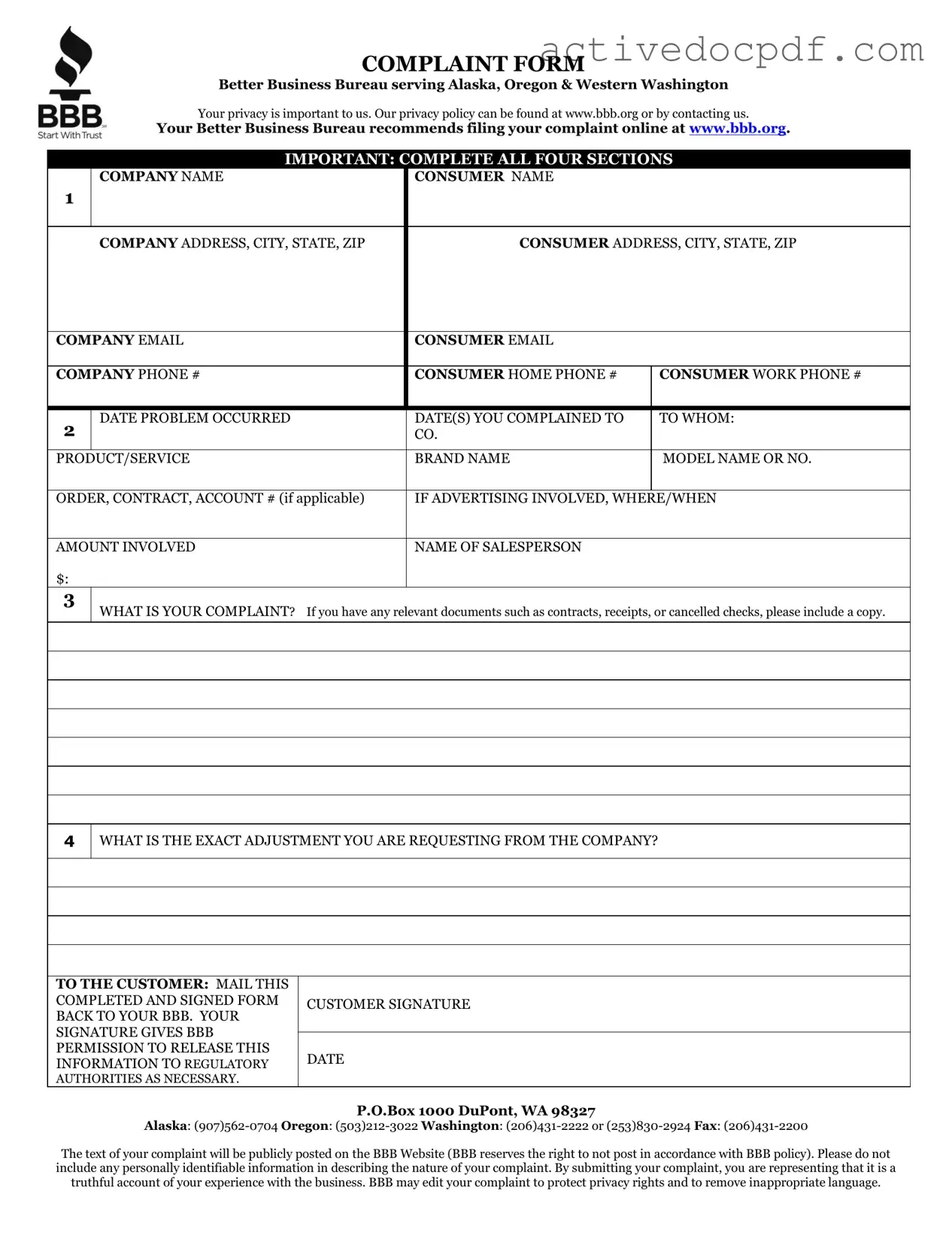The BBB Complaint Form is a tool provided by the Better Business Bureau to help consumers report issues with businesses. It allows individuals to formally document their concerns and seek resolution. Submitting a complaint can also alert others about potential problems with a business.
Anyone who has experienced a problem with a business can file a complaint. This includes customers, clients, or anyone affected by the business's actions. The process is open to all consumers, regardless of whether they are individuals or organizations.
What types of issues can be reported?
The BBB Complaint Form can be used to report a variety of issues, including:
-
Product or service quality problems
-
Billing disputes
-
Customer service issues
-
False advertising
-
Delivery problems
Essentially, any issue that affects your experience with a business can be reported.
Filling out the complaint form is straightforward. You will need to provide:
-
Your contact information
-
The business's name and contact details
-
A detailed description of your issue
-
Any relevant documentation, such as receipts or emails
Make sure to be clear and concise in your description to help the BBB understand your concern.
What happens after I submit my complaint?
Once your complaint is submitted, the BBB will review it. They will then forward it to the business in question, allowing them the opportunity to respond. You will receive updates on the status of your complaint, including the business's response.
Is there a fee to file a complaint?
No, filing a complaint with the BBB is free of charge. The BBB is a nonprofit organization that aims to help consumers and businesses resolve disputes without cost to the consumer.
How long does it take to resolve a complaint?
The time it takes to resolve a complaint can vary. Generally, businesses are given a specific timeframe to respond, usually around 14 days. After that, the BBB will follow up to ensure the issue is being addressed. Some complaints may take longer depending on the complexity of the issue.
Can I remain anonymous when filing a complaint?
No, you cannot remain anonymous when filing a complaint with the BBB. Your contact information is necessary for the BBB to communicate with you and to provide updates. However, the BBB will not disclose your personal information to the business without your consent.
What if I am not satisfied with the response from the business?
If you are not satisfied with the business's response, you can take further action. You may choose to escalate the issue by providing additional information to the BBB. Alternatively, you can consider other avenues such as contacting a consumer protection agency or seeking legal advice.
